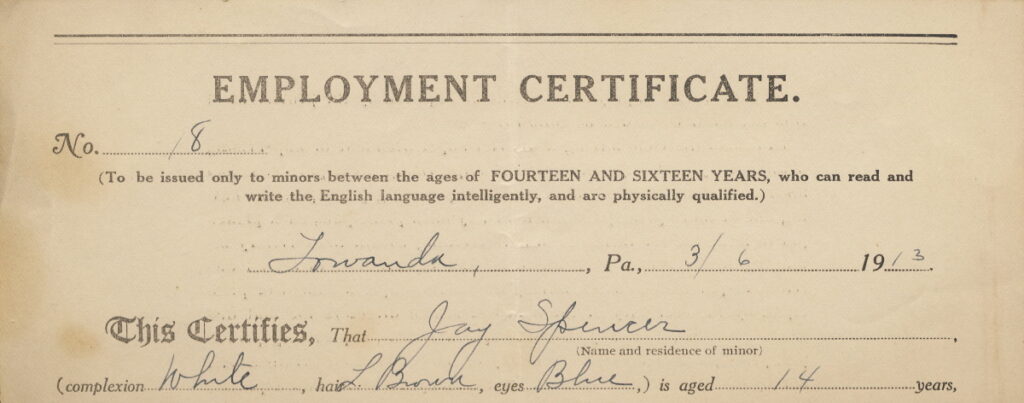Working Papers
Many people remember getting their working papers around the age of 14. My grandfather, Jay Spencer, got his working papers at the age of 14 years old in 1913. He was a good student but more school was not on his mind.
Jay was born 15 October 1898 in Burlington Township, Bradford County, Pennsylvania. He had 2 sisters who lived to adulthood and a brother and sister who didn’t. His parents divorced when he was about 12 and he lived with his maternal grandparents for a time.
When he finished 8th grade, he left to find work. This was fairly typical unless the student showed an academic talent. Most children, however, left school to find work and provide some additional money for the family.

Working Papers, also called the Employment Certificate, allowed 14 to 17 year olds to work legally starting in 1913.
Where He Worked
Jay worked at the Jennings, Kiser & Jennings Dye Works in Towanda, Pennsylvania for a few years as a general laborer before getting married in 1916 and landing a job as a laborer in the Lehigh Valley Railroad (LVRR) maintenance yard in Sayre, Pennsylvania. Jay met his wife, Minnie Williams while working at the dye works (also called a “silk mill”). Minnie also quit school after 8th grade but she was 2 years older than Jay.
Sometime during the early 1940s the railroad planned to put him on track maintenance so he quit to work day labor the rest of his life. Track maintenance was a dangerous job so Jay decided to find odd jobs to put food on the table and pay the bills. In 1943 he bought a house for $900 at a sheriff’s sale.
New Labor Department
The Employment Certificate – commonly called “working papers” – was one of the first documents required by the US Department of Labor (DoL), which was established in 1913. In fact, the first real labor laws didn’t pass Congress until 1915. So, Jay was one of the first generation to need working papers from 14 to 17.
